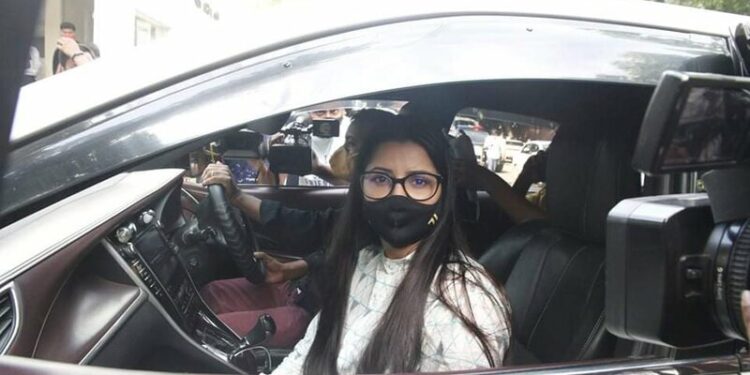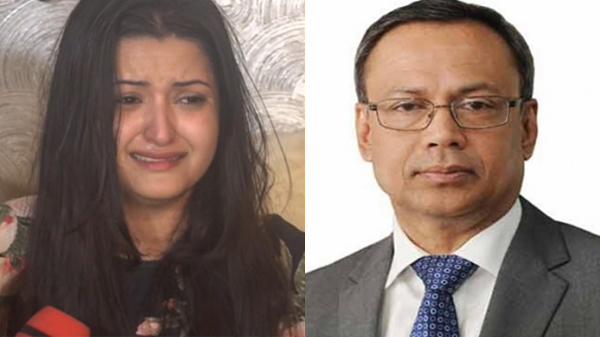
Actress Smriti Shamsunnahar alias Pori Moni
By Afsan Chowdhury/Dhaka Courier
Dhaka, June 19: The Pori Moni affair has shown how money, sex, clubbing and power all combine to produce the current Bangladesh sleaze. Many seem shocked but most are not. They are doing the proverbial “how terrible” routine but in their heart know that sleaze is as old as the birth of Bangladesh. And Dhaka is its capital. Just about every route to the top is slathered with filth but it’s the most welcoming sight and smell in town. It means success is guaranteed.
Leading Bangladeshi film actress Smriti Shamsunnahar alias Pori Moni had complained to the police that a real estate tycoon, Nasir U Mahmud, had tried drug and rape her at the Dhaka Boat Club house earlier in June. Mahmud and his accomplice were arrested but he pleaded not guilty.
Peace committee and the connection culture
Bangladesh is a peasant state and though it has grown many times in size, it remains systemically rooted in the village society. Villages are informal in nature and depend on family, bongsho, taraf and salish factions/ groups to run itself. This was very useful in 1971 as people found refuge and shelter in other homes. It saved millions of lives.
There was the open generosity of ordinary people who gave shelter to strangers too. It was not just on an individual basis but collectively. The great shelter seeking move to the villages that began after the Pak army crackdown produced a mass migration from the cities that is unprecedented in our history. Literally millions left and absolutely everyone found refuge in one of the most amazing affirmative collective acts of any society.
When the Pakistani invasion was over around the end of April, they began to set up a network of collaborators. These Peace Committees were products of war and based on connections. It went back to the factional village political structure and who in turn recruited their lackeys to become razakars. At the village level, it was mostly about opportunity and convenience rather than ideology which is a more urban product. Hence Jamaati were not in the villages but at the sub-district and district level upwards. However, they also came from villages but were not located there.
The rise of the connection economy
Fast forward to post-1971 as the post-war shortage economy boom began and Dhaka was reborn with a zeal for property grabbing, smuggling, hoarding and the rest like never before. People protested feebly but life was tough so they accepted. But the economic structure that evolved was based on connections including war, social and political connections.
It wasn’t so widespread then but grabbing was formalized, even officialized. Business and industrial units abandoned by Pakistanis were handed over to the GOB appointed Administrators who did their best to strip them of all assets and become wealthy. The appointment of course came through connections.
There were many properties of the foreign Pakistani elite which were grabbed by the newly powerful of all kinds or linked to them. Those who did could because they had connections. It was widespread and the fundamentals of the connection economy was largely established then. With it came the trappings of quick and ill-gotten wealth: cultural sleaze. And that is a by- product of the economy, not a phenomenon in isolation or by itself.
The second and third phase of connection economy
The second came in after power change and installation of the military regime and institutional theft particularly banking sector theft began. Despite the all ranging poverty, Bangladesh has always moved forward economically and so there was enough money to be made and taken no matter how and still remain safe. And when there is such money, sleaze increases. Much of it was institutional which meant that it could not be reduced by good governance practices only. It required institutional restructuring which of course none wanted and don’t want now either.
Politically, the system never took off because the economic nature – connection- could not be compatible with an open political society which means open market economy. Hence conspiracy became the norm which is how a series of changes were attempted, all violent. Ultimately the various warring factions within the system stabilized somewhat after the violent apex of 1980.
The third regime in this line was the ultimate peak of sleaze where the CEO of the state became its primary symbol. Corruption, force and sex were all hallmarks of the third regime and it flourished. While many abuse the individual person, people forget that the rest were all willing collaborators. Even poets joined the parade and the sex scandals involving the finer ladies of Dhaka were so many that it confirmed the establishment of structural sleaze. It is identified and continues.
Post-1990 sleaze
With the civilian political parties phase has come expansion of the economy, much greater opportunities and the role of connections as an official part of the wealth making process. It’s essential to be “connected” so it’s obviously the main ingredient.
The sleaze that is produced is part of the overall system and we learn only when it reaches the media and is safe to report. The Dhaka Boat Club incident is simply a symbol of how the village economic structure – murubbi, chamcha, taraf, salish pokkho etc- has passed on to the national economy and society as the model. Basically, the operating system is following the rural faction based one. And the sleaze is the by-product of the connection economy clashing with the open economy model. So it will go on as it always has.
You have never been clean, dear Bangladesh. So smile.

